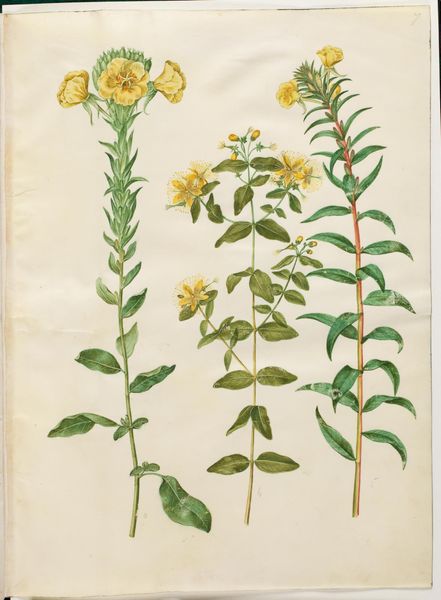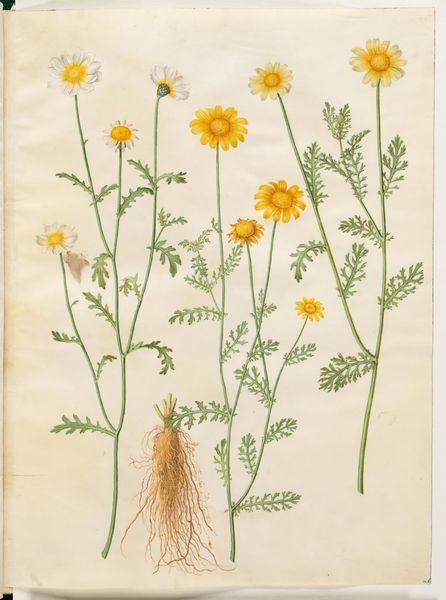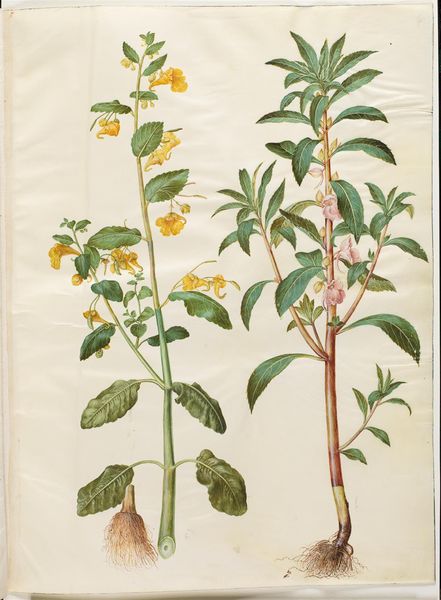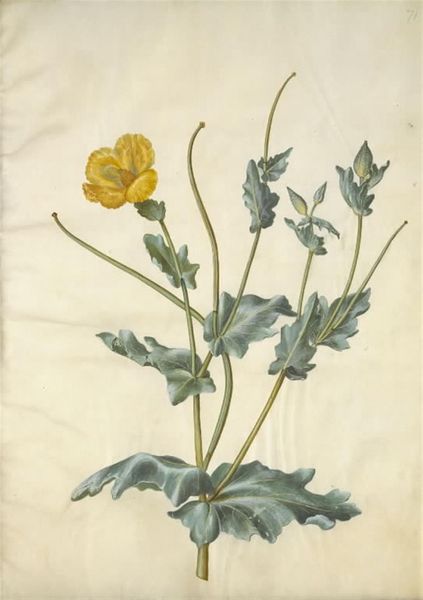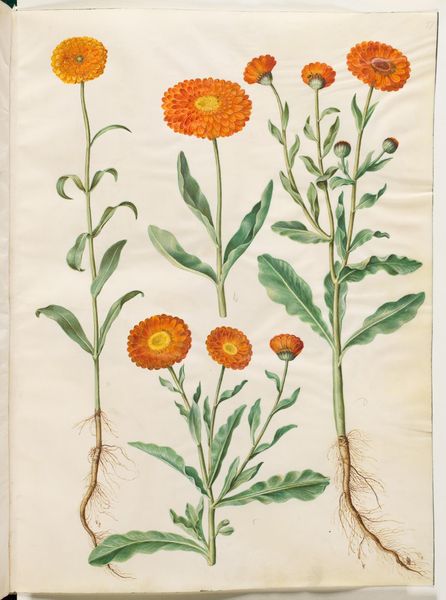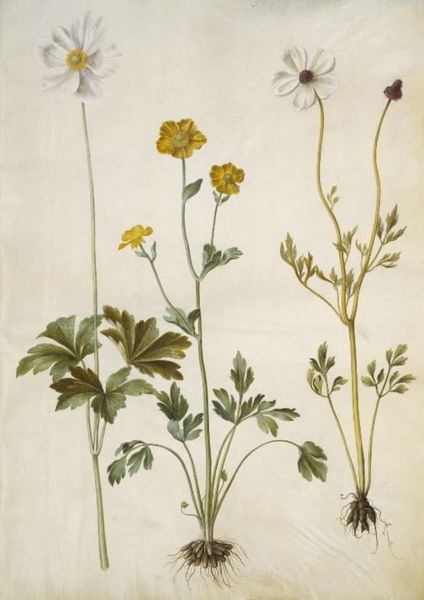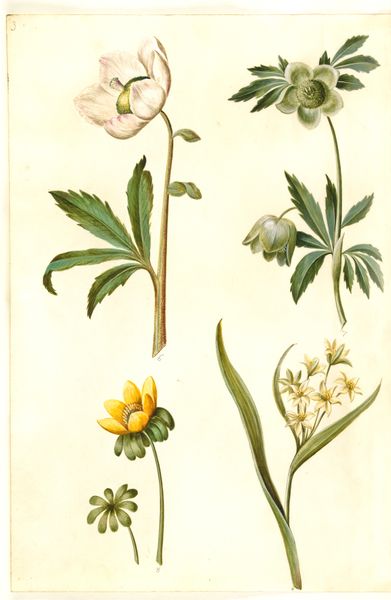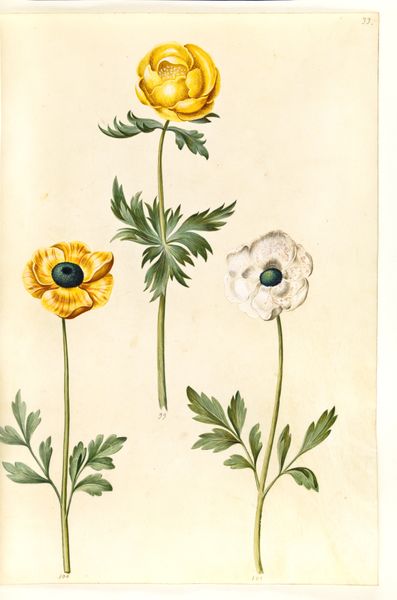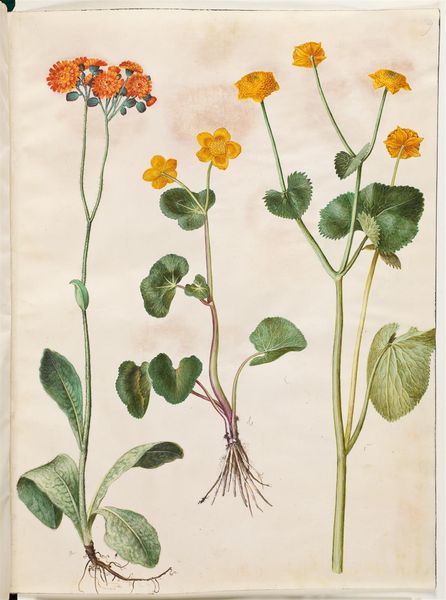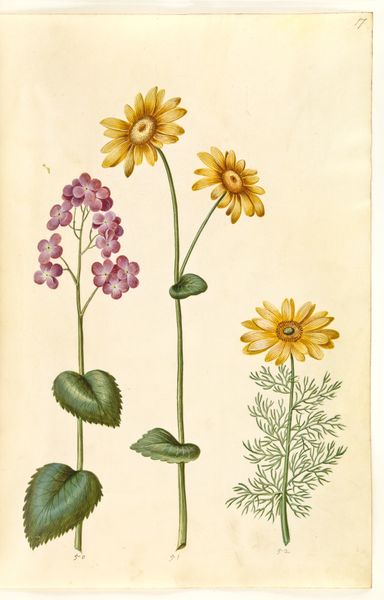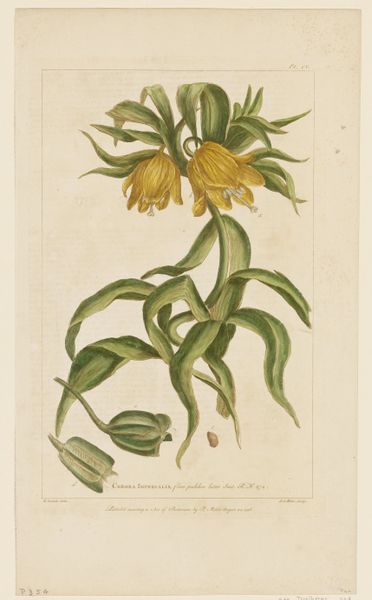
Doronicum pardalianches (hjertebladet gemserod); Rudbeckia laciniata (fliget solhat) 1649 - 1659
0:00
0:00
drawing, gouache, watercolor
#
drawing
#
water colours
#
gouache
#
watercolor
#
northern-renaissance
#
botanical art
#
watercolor
Dimensions: 505 mm (height) x 385 mm (width) (bladmaal)
Curator: Take a look at this stunning botanical study from the mid-17th century. It’s titled "Doronicum pardalianches (hjertebladet gemserod); Rudbeckia laciniata (fliget solhat)," attributed to Hans Simon Holtzbecker, rendered in watercolour and gouache. Editor: It's interesting— the plant on the right demands immediate attention. There’s an almost startling boldness in the stark composition against what appears to be paper. Curator: Indeed. Holtzbecker worked primarily at the court of Frederik III in Copenhagen. Works such as this served multiple purposes, operating as both scientific record and status symbol for the elite, speaking to wealth and control over nature, especially given how botanical art was being institutionalized then. Editor: I notice the exquisite detail in the leaves, the delicate veins and gradations of colour. Considering Holtzbecker's use of watercolour and gouache, what can that choice of media tell us about his artistic intentions, and maybe even the consumption of luxury goods at the time? Curator: That's an astute observation. Gouache would have provided opacity, allowing for layering and correcting mistakes – we also have to acknowledge the role played by institutions. Access to those higher-quality pigments was obviously linked to social position. Editor: So, it’s interesting to think of even scientific illustration enmeshed within systems of production, consumption and power that art history usually relegates to grander displays of monarchy and military exploits. This rendering becomes more than a document; it's tied to labour. Curator: Precisely, and the level of detail certainly signifies considerable labour, from both the artist and the tradesmen who furnished these exotic materials from international supply routes. These seemingly straightforward representations offer a lens into societal structures. Editor: Looking closely, I admire his skillful capture of light playing across the flowerheads, a feat accomplished through layering delicate washes of watercolor. You’re right, knowing what went into those paints, even at the scale of botanical illustration changes everything about how we are positioned to view Holtzbecker's handiwork. Curator: It enriches our perspective immeasurably, to grasp art as an interwoven product, simultaneously illuminating our comprehension of power.
Comments
No comments
Be the first to comment and join the conversation on the ultimate creative platform.
